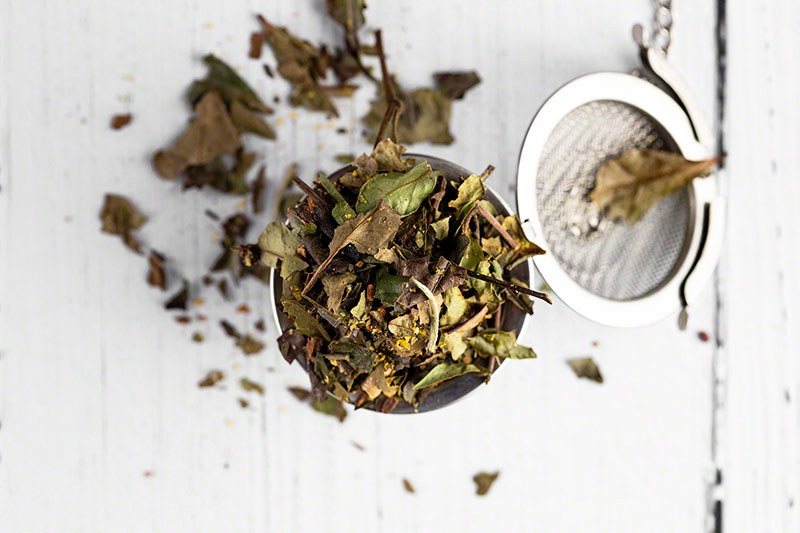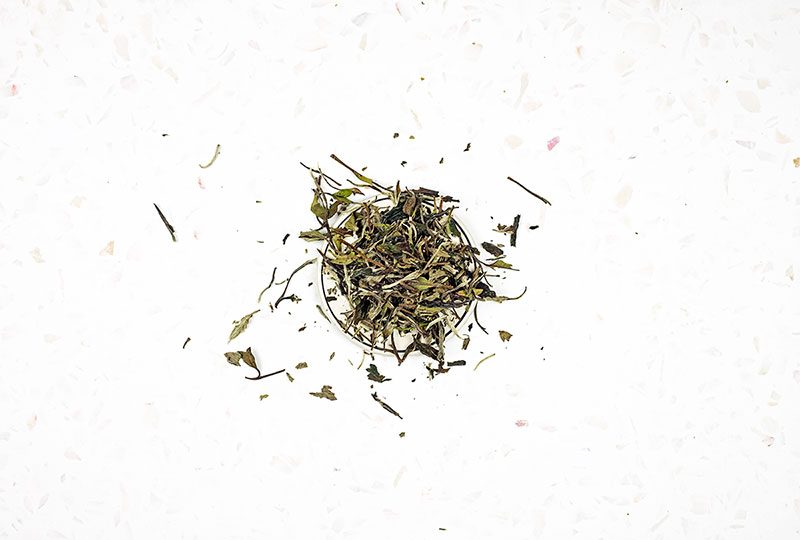White Peony Tea Guide
Thinking of trying white tea and the name White Peony sounds exciting? Or you are already an avid white tea drinker and want to learn more about your favorite tea type? Learn more about this exquisite type of tea from our guide.
What is white peony tea?
White peony is a Chinese white tea made from Camellia sinensis tea plant. Other names for White Peony tea are Bai Mu Dan or Pai Mu Tan. Together with Silver Needle, it’s one of the most popular white teas around the world.
White tea is the least processed type of tea. It’s only slightly oxidized, and most of its natural freshness and nutrients are preserved. Tea leaves are only withered and dried. Although the production includes very few steps, it takes years of learning and exceptional tea producing skills to make a high quality White Peony tea.
White Peony has a beautifully shaped dry leaf. In fact, they are not shaped at all. It contains tea leaves in their most natural form, withered and dried. White Peony is made from one bud and one or two leaves and includes whole branches and stalks. Tea leaves are harvested in spring and both buds and some leaves will be covered with fine white hair.
White Peony is very similar to Gong Mei and Shou Mei tea. However, they will have a different flavor and appearance. White Peony tea leaves are much brighter, greener, and contain a lot more buds compared to darker Gong Mei.
What are white peony flowers?
White peony flowers are a type of flowers both popular and important throughout Asia. Although this tea is named White Peony, it doesn’t contain any white peony flowers. While it’s still not quite clear how White Peony got its name, there are different explanations. Some suggest it’s because of its delicacy and sophistication, others think it’s because of the appearance of the leaves, and some even say the tea has a light peony aroma. No matter the reason, White Peony is a very elegant, mellow and extremely beautiful tea.
History and origin of the tea
White Peony originates from Fuding in Chinese Fujian Province. But what’s even more interesting is that Fujian is the origin of all white tea, and it’s still producing some of the best and highest quality white teas. Fuding and Zhenge are two main white tea producing areas in Fujian, but not the only ones. Although the original White Peony will always come from China, today you can find Ceylon or Indian White Peony too. They will have a distinctive flavor profile matching the terroir.
Health Benefits
White Peony is made from Camellia sinensis plant. Just like other real teas, it contains antioxidants, caffeine, L-theanine, chlorophyll, minerals, vitamins and other compounds. Studies suggest that white tea may provide a higher antioxidant activity than green tea. However, the amount of catechins in white tea can vary greatly – from 14.40 to 369.60 mg per gram of dried leaf[1]. Next, the amount of catechins in your cup will depend on the way you brew your tea as well.
White Peony is generally prepared with very hot water and steeped for 2-3 minutes. Higher temperature and longer steeping time may extract more catechins. Studies showed that White Peony, when brewed at 194°F has the highest amount of free amino acids, and same amount of EGCg as Shou Mei. If you are looking for a nutrient rich tea, White Peony is a better choice than Silver Needle, a white tea made of buds only.
Catechins are responsible for a myriad of health benefits. They may help protect the skin, heart, teeth and provide antimutagenic, antioxidant, antibacterial and anti-inflammatory properties and help with weight loss. White tea is especially popular for skin health as it may help prevent skin-aging and reduce the sun damage[2].

Tea blend with white peony white tea
Caffeine Content
Unlike the common belief, caffeine content of white teas may be very high. White Peony has a higher amount of caffeine than Silver Needle or Shou Mei white tea[3]. On average, white tea contains slightly higher amounts of caffeine than green tea[4]. For example, one study showed that White Peony has around 18 mg of caffeine per gram of dried leaf, more than Chinese Yunnan and Indian Darjeeling black tea, and more than many green teas, including sencha and Mao Feng teas[5].
Read more: White tea vs Black Tea
Flavor Profile
White Peony is a very delicate tea, but stronger than Silver Needle. It has a bright yellowish color. Expect light sweetness, full mouthfeel, refreshing, light melon and dried hay flavor, and hints of floral and baked notes. White Peony has no bitterness. It’s one of those teas you should always make from loose leaves rather than tea dust or fannings.
Read more: Best white teas to buy
How to Brew White Peony Tea
Always use freshly boiled spring water for making white tea. White tea is so delicate that low-quality water will easily ruin even the highest quality tea leaves. Next, it’s very important to use a teapot. White Peony tea leaves won’t fit into most tea infusers. Other option is a tea infuser basket. Preheat your teapot and cup by pouring hot water in and out. Use about 3-4 grams of tea leaves per cup of water. White Peony has very light leaves, and 3 grams may look like you are using too much. Let the water cool down to around 190-194°F. Steep the leaves in hot water for 2-3 minutes. Strain and add sweetener if needed. However, the best way to enjoy White Peony is without any condiments. You can re-steep the leaves at least once.
Read more: How to brew white tea
Disclaimer: This article is for informational purposes only. It’s not intended to replace medical advice, diagnosis or treatment. Every person is different and may react to different herbs and teas differently. Never use teas or herbs to treat serious medical conditions on your own. Always seek professional medical advice before choosing home remedies.
References:
[1] https://pubmed.ncbi.nlm.nih.gov/20722909/
[2] https://www.ncbi.nlm.nih.gov/pmc/articles/PMC3214789/
[3] https://www.ncbi.nlm.nih.gov/pmc/articles/PMC6170294/



